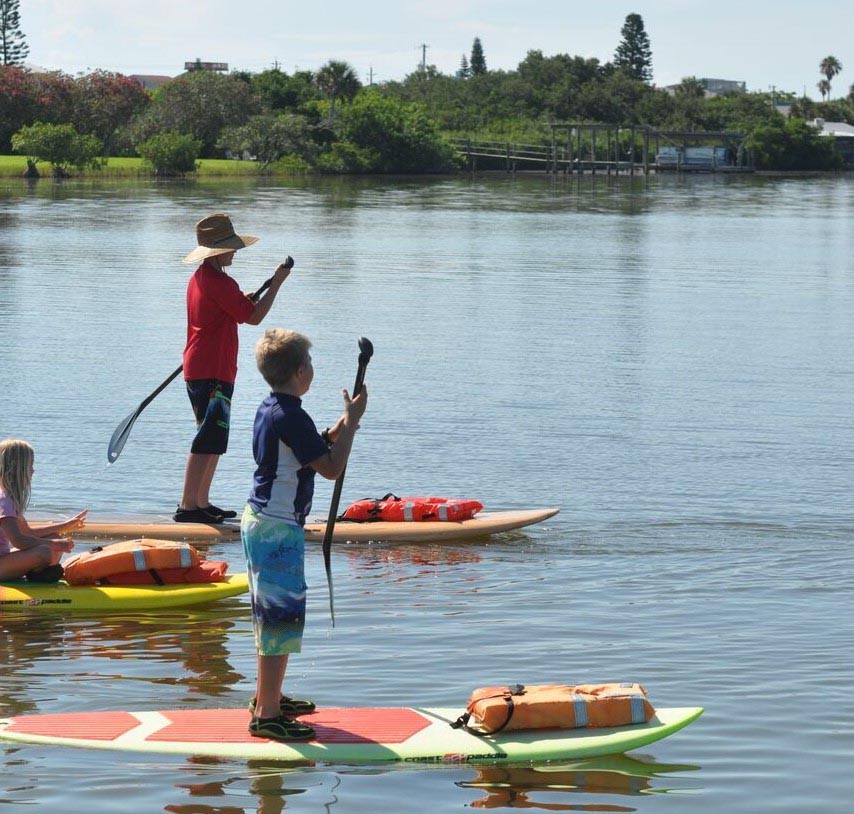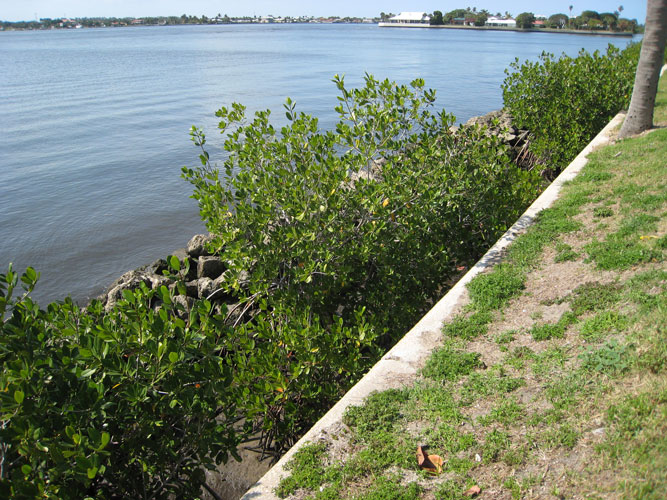Why Choose a Living Shoreline Approach
Valuable coastal wetlands hug the edges of our bays and estuaries around the state of Florida. They work as buffers between land and water that protect and stabilize the shoreline and adjacent lands where people live. They provide economic and recreational benefits for people, and habitat for fish and wildlife. All living shoreline projects should be designed to mimic natural wetlands in order to provide as many of the same services as possible.
Living shorelines provide the following benefits:
- Reduce wave energy and associated shoreline erosion (property loss).
- Reduce storm water flow rates thereby reducing erosion and reducing pollution entering the bay or estuary.
- Buffer the effects of storms, especially tropical storms and hurricanes.
- Build up shoreline areas by trapping sediments and stabilizing coastal land.
- Ensure natural sediment movement along shorelines.
- Improve water quality in our bays and estuaries by filtering pollutants like a living “kidney”.
- Provide for shorelines that are resilient to storm damage and sea level rise – A gradually sloping interface between land and sea helps maintain a plant community that can adapt as sea level rises.
- Trap carbon to help reduce the effects of climate change.
- Create and connect diverse animal habitats, provide migratory pathways for plants and animals, and support valuable fisheries.
- Provide recreational opportunities for people – fishing, kayaking, paddleboarding, and wildlife viewing are all better where there’s habitat.
- Beautify shorelines.

Recreation is more fun along a living shoreline than a hardened shoreline.

Example of a “redeemed seawall” where mangroves were planted in front of an existing hard structure.
Learn more about choosing a living shoreline with this Story Map for Tampa Bay.
Explore the interactive map to see recommended design options along different types of shoreline.
See how living shorelines in Florida are reversing coastal erosion along private properties, as reported by PBS Newshour.
Explore the interactive map to see recommended design options along different types of shoreline.
See how living shorelines in Florida are reversing coastal erosion along private properties, as reported by PBS Newshour.
Keep in mind that living shoreline projects should not be constructed on existing naturally-functioning shorelines. ‘Do nothing’ or coastal retreat are always the first approaches to consider. Shorelines naturally erode and accrete over time. When “do-nothing” is not an option, however, a living shoreline is preferable to shoreline hardening.
Keep Exploring!
